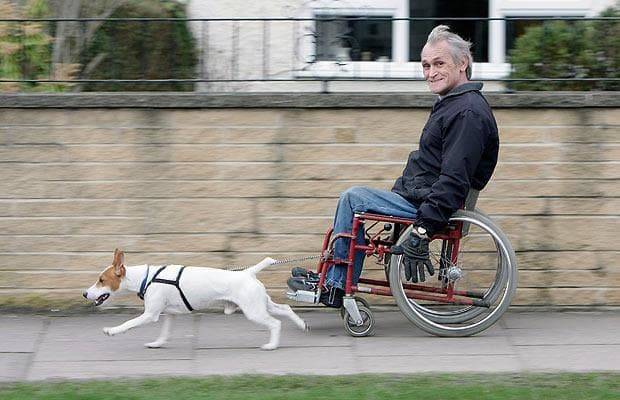Last Updated on October 11, 2018
Dogs are keen on performing various tasks and have been a part of the human activity for a long time. Dogs have been used as guard dogs, hunting or herding dogs, watch dogs and have even been kept as pets. Nowadays dogs are mostly kept as pets, and the number of other types of working dogs has dwindled.
Yet there are also service dogs which provide invaluable help to people with disabilities. These types of dogs perform many tasks, from guide to seizure dogs, each specifically bred and trained to do essential tasks.
While there are many types of service dogs all of them are required to resist distraction when in public. It is expected that the dog will have the ability to focus especially under pressure. Many dogs are trained to ignore distraction when wearing service dog gear, yet be relaxed when they aren’t.
The life and training of a service dog
Most service dogs have a different etiquette when working. The dog recognizes work time when he is wearing his assistance dog equipment. In order to recognize when and how he must intervene the dog has to be specifically trained for the tasks.
This usually starts at a very young age. During this time the dog puppies are socialized with all kinds of people and animals. The dog must not become aggressive towards other people and pets without reason, and is required to respect his position regardless of the situation.
What types of service dogs are there
There are many types of service dogs, each performing unique tasks. The most common types include hearing dogs, mobility dogs, guide dogs and even autism dogs.
Puppies are trained to become comfortable with as many situations as possible. During the early stages of their life, they are also trained in basic manners. This includes not jumping on other people, waiting at doors, listening to commands like sit or come, knowing how to walk on a leash and being comfortable enough to sit in a car without disturbance.
After their core training, they are tested at a training center to evaluate their progress. If they are up to par their specific training begins. Here they are taught to perform the tasks required by a specific individual. Since people have different needs and disabilities the dogs must be custom-trained for each person.
It is also possible to train your own dog. Owner-trained service dogs have a lower success rate but if an individual considers that he wants a dog breed that is not listed at the training facilities and he has the knowledge to properly train him he is free to do so.
Autism service dogs
Autism is a type of sensory disorder. The person incorrectly processes different sensory information. People with autism usually have trouble identifying and expressing body language, facial cues, and intonation. Thus they have difficulty communicating with other people.
Autism service dogs will help people with autism gain independence through the ability to perform daily activities that were previously unachievable. These dogs are required to signal the handler when a situation that requires awareness and focused processing presents itself.
People with autism don’t have a way to prioritize information processing. They are trying to process everything, from the smell of the air to the feel of the clothing and much more, all at the same time. So when there is a fire alarm the person might have a hard time identifying the urgency of the situation, and the task of the service dog is to signal the importance of an event.
Hearing and Guide service dogs
Other types of sensory processing disorders include deafness and blindness. Guide and hearing service dogs work in much the same way as an autism dog. The dog signals the handler when an important event is occurring – the phone rings, the food has finished cooking, someone is at the door – or in the case of blind people – an intersection, stairs and so on.
All these types of service dogs are trained to guide the person out of a situation on command.
Mobility service dogs
These service dogs are trained to help people with mobility impairments. Typically wheelchair users require this type of service dog. These dogs help people by retrieving dropped items, turning light switches and even paying for items at a store.
They can even help the handler transfer from the wheelchair, open or close doors for them. They are trained to help unclothing and many other tasks. Since service dogs are custom-trained it is possible to add a large list of tasks to the training program and make the dog provide invaluable day to day help.
Psychiatric service dogs
Psychiatric service dogs have varying tasks largely depending on the partner in question. While with other types of service dogs you can understand the array of tasks they are commonly required to perform in the case of mental illnesses tasks will vary depending on the individual.
For example, some psychiatric service dogs are trained to remember and backtrack a route for when a person has a dissociative episode and when he becomes aware again he is unable to say where he is and can’t retrace his steps. The dog follows his scent trail back in order to bring the person to a familiar setting. Similarly, all types of service dogs are trained to lead a person to a specific location by command, such as “home”.
Service dogs can only be used by qualified people. If you had arthritis and weren’t able to move easily maybe you would benefit from a wheelchair but that doesn’t mean it is required for you to move. Even if you would benefit from a service dog you would only get one if you really need one.


